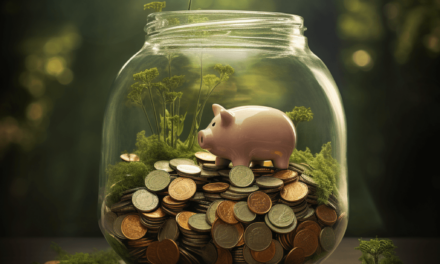- Do you pay capital gains tax in a SIPP?
- What is capital gains tax?
- How does capital gains tax in a SIPP work?
- Do you pay capital gains tax on an inherited SIPP?
- What are the tax implications of cashing in a SIPP?
- Can I take 25% tax-free from a SIPP?
- What is exemption of capital gains?
- What other items are exempt from capital gains tax?
- How is a SIPP taxed at age 75?
- Can I take my 25% tax-free lump sum and leave the rest?
- FAQs
Do you pay capital gains tax in a SIPP?
No, you don’t pay capital gains tax (CGT) within a Self-Invested Personal Pension (SIPP).
This tax advantage is one of the main reasons why SIPPs are an attractive investment option for long-term retirement planning.
By not paying CGT, your investments can grow unhindered, allowing you to accumulate a more substantial pension pot for your retirement years.
You also don’t pay income tax on dividends and interest that your investments earn within your SIPP (although you may when you eventually start SIPP drawdown).
To better understand this advantage, let’s first look at what a SIPP is.
A SIPP is a type of personal pension that offers more control over your investment choices compared to traditional personal pensions.
With a SIPP, you can choose from a wide range of investments, such as stocks and shares, bonds, funds, and ready-made portfolios. This flexibility allows you to tailor your investment strategy according to your financial goals and risk tolerance.
What is capital gains tax?
Capital gains tax is a tax imposed on the profit you make when you sell or ‘dispose of’ an asset that has increased in value.
It applies to various different types of assets, such as investments like funds and shares, property (excluding your main home), and even some personal possessions like valuable antiques, artwork or jewellery.
The tax is calculated based on the difference between the sale price and the original purchase price, which is referred to as the ‘gain‘.
In the UK, there are different rates of CGT depending on the type of asset and the individual’s income tax band. For example, basic-rate taxpayers pay a lower CGT rate compared to higher-rate taxpayers.
Here’s a table to explain how it works:
| Income Tax Level | CGT Rate for Assets | CGT Rate for Property (excluding main residence) | Annual Exempt Amount |
|---|---|---|---|
| Basic-rate | 10% | 18% | £6,000 |
| Higher-rate | 20% | 28% | £6,000 |
| Additional-rate | 20% | 28% | £6,000 |
The exact calculations can get a bit more complex depending on your circumstances. HMRC has some more CGT information if you need to make specific calculations.
How does capital gains tax in a SIPP work?
As mentioned earlier, you don’t pay CGT on investments held within a SIPP.
This tax-efficient wrapper, known as a ‘pension’, allows your investments to grow without the liability of CGT, which can help you save more for your retirement.
However, it’s crucial to remember that this tax advantage applies only to investments inside the SIPP. If you hold investments outside of a pension, such as in a regular investment account, you may still be subject to CGT.
So, it’s essential to consider the tax implications of different investment accounts when building your overall retirement investment strategy.
Do you pay capital gains tax on an inherited SIPP?
The good news is you don’t pay CGT on an inherited SIPP, either.
The beneficiary who inherits the SIPP will have the same tax advantages as the original investor, meaning the investments within the SIPP remain free from CGT.
When someone passes away, their SIPP can be passed on to their chosen beneficiaries, who can continue to benefit from the tax advantages. This can provide additional financial security for the deceased’s loved ones and help them manage their inheritance more effectively.
What about inheritance tax?
If you die after the age of 75, your SIPP beneficiary will be liable to income tax on the drawdown from your SIPP. If you die before the age of 75, it’s usually completely tax-free for your beneficiaries.
What are the tax implications of cashing in a SIPP?
Cashing in a SIPP can have tax implications, but it’s not about CGT.
When you withdraw money from your SIPP, the first 25% is typically tax-free.
The remaining 75% is taxed as income at your marginal rate. So, depending on your tax bracket, you could end up paying a sizeable chunk in income tax.
Your marginal tax rate is determined by your total taxable income, including your salary, rental income, and pension withdrawals. In the UK, there are three income tax bands and a personal allowance:
| Income Tax Band | Taxable Income (£) | Tax Rate |
|---|---|---|
| Personal Allowance | Up to £12,570 | 0% |
| Basic-rate | £12,571 to £50,270 | 20% |
| Higher-rate | £50,271 to £125,140 | 40% |
| Additional-rate | Over £125,140 | 45% |
By understanding these income tax bands, you can try to plan your pension withdrawals to minimise your tax liability.
Can I take 25% tax-free from a SIPP?
Yes, you can!
When you decide to access your SIPP, you can take 25% of your total pension pot as a tax-free lump sum. The rest, as previously mentioned, is taxed as income.
This tax-free allowance can be a valuable source of funds during your retirement. For example, you could use the lump sum to pay off any outstanding debts, fund a dream holiday, or make home improvements. The choice is yours!
What is exemption of capital gains?
Exemption of capital gains refers to specific circumstances or assets that are not subject to CGT.
For instance, you usually won’t pay CGT on your main residence, personal belongings worth less than £6,000, or gains made within a SIPP or Individual Savings Account (ISA).
Understanding CGT exemptions can help you make informed decisions about your investments and financial planning.
By utilising tax-efficient investment vehicles like SIPPs and ISAs, you can grow your wealth more effectively and keep more of your hard-earned gains.
What other items are exempt from capital gains tax?
Some other examples of CGT-exempt items include:
- Government-issued bonds, like gilts or premium bonds: These bonds are issued by the UK government and are considered low-risk investments. They don’t attract CGT, making them suitable for cautious investors who want to preserve their capital.
- Lottery, pools, and betting winnings: These types of windfalls are not subject to CGT, which means you can enjoy your winnings without worrying about paying tax on them.
- Gifts to your spouse or civil partner: Transferring assets to your spouse or civil partner usually doesn’t attract CGT, making it a useful strategy for managing your joint finances and tax liabilities.
- Gains from the sale of a car, unless it’s been used for business: Selling a car typically doesn’t attract CGT, as long as it hasn’t been used for business purposes.
How is a SIPP taxed at age 75?
When you reach 75, your SIPP remains tax-efficient.
There’s no CGT on investments within the SIPP, and the 25% tax-free lump sum still applies.
Before April 2023, if you hadn’t accessed your pension pot by 75, your lifetime allowance might have been affected, which could have led to tax charges.
However, the lifetime allowance has now been scrapped by the government in order to encourage people to save more into their pensions.
The lifetime allowance was the maximum amount you could accrue in your pension without facing additional tax charges.
Can I take my 25% tax-free lump sum and leave the rest?
Absolutely! You can take the tax-free lump sum and leave the remaining 75% invested in your SIPP.
This allows your investments to continue growing, and you can decide when and how to access the rest of your pension.
By deferring your remaining pension, you can potentially benefit from further investment growth and better manage your income tax liabilities in retirement.
FAQs
Do you pay capital gains tax on your pension?
No, you don’t pay capital gains tax on your pension, including SIPPs.
The investments within your pension grow tax-free, making them an excellent choice for long-term retirement planning.
How much of a SIPP is tax-free?
You can take 25% of your total SIPP value as a tax-free lump sum.
The remaining 75% is subject to income tax at your marginal rate when you withdraw it.
This tax-free allowance can provide a significant financial boost during your retirement years, allowing you to fulfil various personal goals or meet unexpected expenses.
How do I get tax-free cash from a SIPP?
To access the tax-free cash from your SIPP, you’ll need to contact your SIPP provider.
They’ll guide you through the process and explain your options for withdrawing the 25% tax-free lump sum and accessing the remaining funds.
It’s essential to consider the tax implications and your financial needs before deciding on the best course of action.
Do you pay tax on SIPP drawdown?
Yes, you do pay tax on SIPP drawdown.
When you choose to draw down your pension, the first 25% is tax-free, while the remaining 75% is subject to income tax at your marginal rate.
This means that the amount of tax you pay depends on your overall income and tax bracket.
Income drawdown is a flexible way to access your pension, allowing you to withdraw as much or as little as you need, while the remaining funds continue to be invested.
This flexibility can help you manage your income and tax liabilities more effectively during retirement.
How many times can you take 25% tax-free from your pension?
You can take a 25% tax-free lump sum once per pension pot. If you have multiple pension pots, you can take a tax-free lump sum from each one. However, you cannot take multiple tax-free withdrawals from a single pension pot.
If you have several pension pots, it’s essential to plan how and when to access each one to maximise your tax-free allowances and manage your retirement income effectively.




